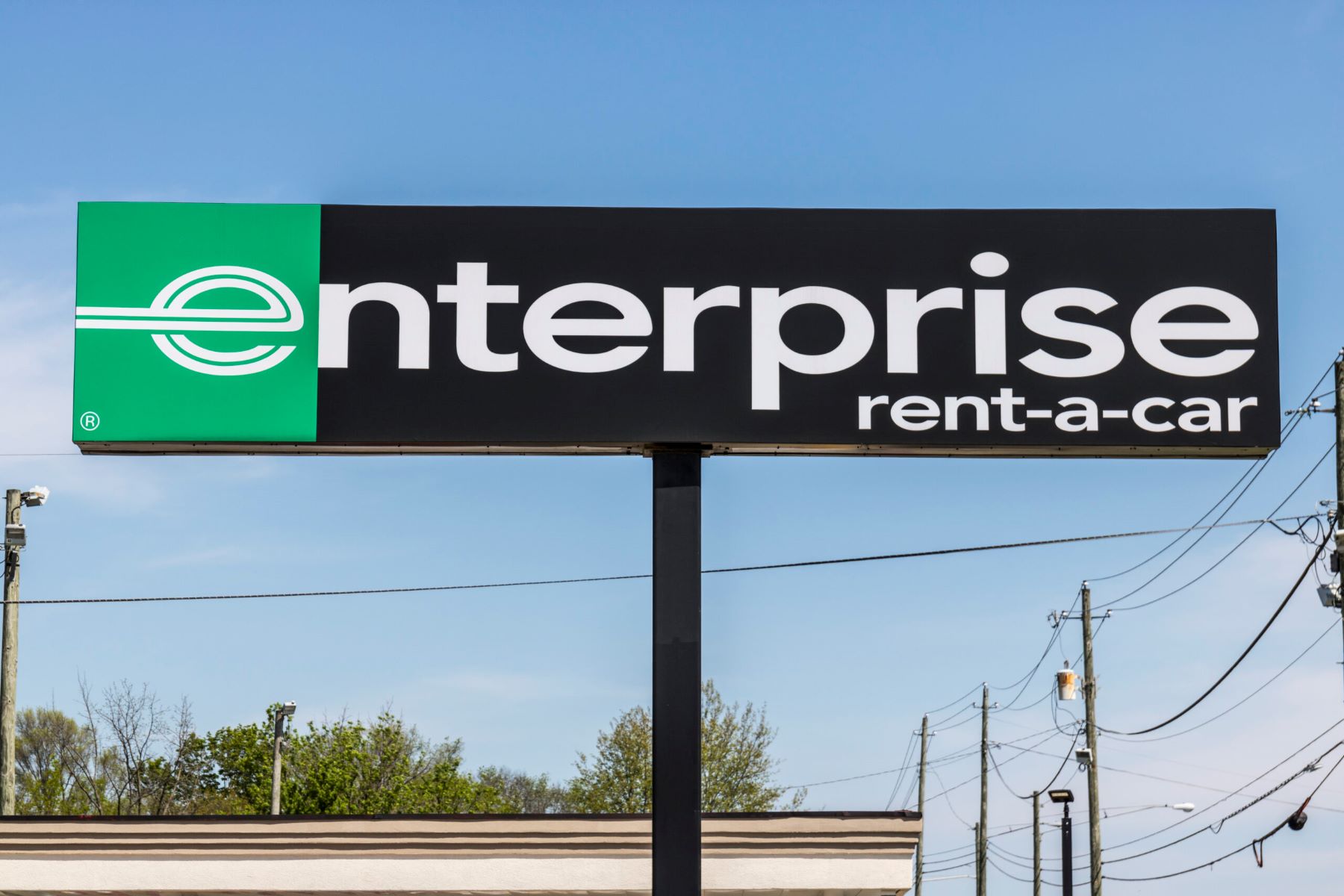

Finance
How Much Is Tonsil Removal With Insurance?
Published: November 8, 2023
Discover how much you can save on tonsil removal with insurance. Explore financing options for this common procedure.
(Many of the links in this article redirect to a specific reviewed product. Your purchase of these products through affiliate links helps to generate commission for LiveWell, at no extra cost. Learn more)
Table of Contents
Introduction
Welcome to our comprehensive guide on the cost of tonsil removal with insurance. If you or a loved one is considering a tonsillectomy, it’s essential to have a clear understanding of the financial aspects involved. Tonsil removal, or tonsillectomy, is a common surgical procedure performed to alleviate various throat and breathing issues.
As with any medical procedure, the cost of tonsil removal can vary significantly depending on several factors, including the patient’s insurance coverage. In this article, we will explore the different types of insurance coverage available, the factors that can affect the cost, the average cost of tonsil removal with insurance, and how you can minimize out-of-pocket expenses.
Understanding the financial implications of tonsil removal is crucial to help individuals and families plan for the procedure effectively. Whether you’re covered by private insurance, Medicaid, or Medicare, knowing what to expect in terms of costs and insurance coverage can alleviate some of the stress associated with the decision-making process.
Understanding Tonsil Removal
Tonsil removal, also known as tonsillectomy, is a surgical procedure performed to remove the tonsils, which are two oval-shaped glands located at the back of the throat. The primary reason for removing the tonsils is to address recurring or chronic tonsillitis, which can cause severe throat pain, difficulty swallowing, and recurrent infections.
Tonsillectomy may also be recommended for other conditions, such as sleep apnea, snoring, breathing difficulties, or enlarged tonsils that obstruct the airway. It is typically performed under general anesthesia and involves the complete removal of the tonsils through the mouth, without any external incisions.
The procedure is relatively common, especially in children, although it can be performed at any age. It is typically an outpatient procedure, meaning the patient can usually go home the same day.
It’s important to note that tonsillectomy should only be considered after other conservative treatment options, such as medication or lifestyle changes, have been ineffective. If you or your child’s doctor recommends a tonsillectomy, it is crucial to have a thorough discussion about the potential benefits, risks, and alternatives to ensure it is the right course of action.
While tonsil removal can improve quality of life for many patients, it’s important to be aware of the potential risks and complications associated with the procedure. These can include bleeding, infection, adverse reactions to anesthesia, and temporary changes in speech or taste. It is crucial to follow post-operative care instructions provided by the surgeon to minimize these risks and ensure a smooth recovery.
Types of Insurance Coverage
When it comes to the cost of tonsil removal, the type of insurance coverage you have plays a vital role in determining the financial implications. Let’s explore the different types of insurance coverage commonly available:
- Private Health Insurance: Individuals who have private health insurance coverage through their employer or purchased independently often have a range of options for coverage. The specific coverage details, including deductibles, copayments, and out-of-pocket limits, will vary depending on the insurance provider and the plan selected.
- Medicaid: Medicaid is a government program that provides health coverage to low-income individuals and families. The coverage and eligibility criteria vary by state, but in general, Medicaid covers tonsillectomies for eligible patients. It is important to understand the specific coverage details and any limitations before proceeding with the procedure.
- Medicare: Medicare is a federal health insurance program primarily for individuals aged 65 and older. It may cover tonsil removal in certain cases when it is medically necessary. However, coverage details and eligibility criteria may vary, so it’s important to check with Medicare to determine coverage and potential out-of-pocket expenses.
- Children’s Health Insurance Program (CHIP): CHIP provides health coverage to children in low-income families. The coverage details vary by state, but in general, CHIP covers necessary medical procedures, including tonsillectomies, for eligible children. Be sure to review the specific coverage details and any limitations of your CHIP plan before proceeding with the procedure.
It is crucial to review the details of your insurance coverage carefully to understand your benefits and potential out-of-pocket costs. This includes checking for any pre-authorization requirements, specific in-network providers, and any limitations or exclusions that may apply to tonsil removal procedures.
Additionally, keep in mind that not all insurance plans cover elective or non-medically necessary tonsillectomies. If your procedure is deemed elective, it may not be covered by insurance, and you would be responsible for the full cost out of pocket.
Factors Affecting Cost
The cost of tonsil removal can vary depending on several factors. Understanding these factors can help you better estimate the financial implications and plan accordingly. Here are some key factors that can affect the cost of tonsil removal:
- Geographic Location: The cost of healthcare services can vary significantly depending on the geographic location. Areas with a higher cost of living or limited access to healthcare facilities may have higher prices for tonsil removal procedures.
- Hospital or Facility Fees: The fees charged by the hospital or surgical facility where the procedure is performed can contribute to the overall cost. Factors such as the hospital’s reputation, location, and amenities may influence the fees charged.
- Surgeon’s Fees: The fees charged by the surgeon who performs the tonsil removal procedure can also vary. Highly experienced surgeons or those with a specialized focus may charge higher fees compared to less experienced or general surgeons.
- Anesthesia Costs: Since tonsillectomies are performed under general anesthesia, the cost of anesthesia services will be a factor. Anesthesiologists or certified registered nurse anesthetists (CRNAs) typically charge for their services separately from the surgical fees.
- Length and Complexity of the Procedure: The duration and complexity of the tonsil removal procedure can affect the cost. Factors such as the size of the tonsils, the presence of adhesions or infections, and the need for additional procedures (such as adenoidectomy) can impact the overall cost.
- Additional Tests or Preoperative Requirements: Depending on the patient’s health status or specific requirements, additional tests or preoperative evaluations may be necessary. These can include laboratory tests, imaging studies, or consultations with other healthcare specialists. These additional procedures can contribute to the overall cost.
- Insurance Coverage and Deductibles: The extent of your insurance coverage and the deductible or copayment requirements specified in your policy can impact the out-of-pocket expenses for tonsil removal. It’s important to review your insurance policy details to understand the coverage and any financial obligations you may have.
Keep in mind that these factors can interact with one another, and the final cost of tonsil removal will be unique to each individual case. Discussing these factors with your healthcare provider and insurance company will help you estimate the costs more accurately and make informed decisions regarding your healthcare.
Average Cost of Tonsil Removal with Insurance
The average cost of tonsil removal with insurance can vary significantly depending on several factors, including the type of insurance coverage, the specific insurance plan, and the individual case. It’s important to note that these figures are approximate and can differ from one healthcare provider to another and from one geographic region to another. However, we can provide a general idea of the average cost.
On average, the cost of a tonsillectomy with insurance coverage can range from $2,000 to $8,000. This cost typically includes the surgeon’s fees, anesthesia fees, and the facility fees charged by the hospital or surgical center.
Your insurance coverage will play a significant role in determining your out-of-pocket expenses. Factors such as your insurance deductible, copayments, and coinsurance percentage will impact the final cost you are responsible for. It is crucial to review your insurance policy details, including any limitations or exclusions, to have a clear understanding of your financial obligations.
The overall cost may be higher if additional procedures or tests are required before or during the surgery. For example, if the surgeon identifies the need for an adenoidectomy (removal of the adenoid glands), additional fees may apply.
It’s important to remember that these cost estimates are averages and can vary significantly based on the factors mentioned earlier. The best way to determine the cost of the procedure with your specific insurance coverage is to consult with your healthcare provider and insurance company. They can provide a more accurate estimate based on your individual case and insurance plan.
Remember to ask questions about your insurance coverage, including any potential out-of-pocket expenses, to ensure you have a clear understanding of your financial responsibilities before proceeding with the tonsil removal procedure.
Coverage Variations by Insurance Providers
When it comes to insurance coverage for tonsil removal, it’s important to understand that different insurance providers may have variations in their policies and coverage. While most insurance plans cover medically necessary tonsillectomies, the specifics of coverage can vary. Here are some important points to consider:
In-Network vs. Out-of-Network Providers: Insurance providers often have a network of healthcare providers and facilities with which they have negotiated discounted rates. Visiting an in-network provider can result in lower out-of-pocket costs for the tonsil removal procedure. It’s essential to check if your preferred surgeon and hospital are in-network with your insurance plan.
Pre-Authorization Requirements: Some insurance providers may require pre-authorization or prior approval before proceeding with a tonsillectomy. This means you will need to obtain confirmation from the insurance company that they will cover the procedure before scheduling it. Failing to obtain pre-authorization may result in a denial of coverage.
Coverage for Elective Tonsillectomies: While insurance plans typically cover medically necessary tonsil removal procedures, coverage for elective or non-medically necessary tonsillectomies may vary. Elective procedures, such as tonsillectomies for snoring or mild sleep apnea, may not be covered by some insurance plans, and you may be responsible for the full cost.
Limitations or Exclusions: Insurance plans may have specific limitations or exclusions regarding tonsillectomies. For example, there may be age restrictions, or certain medical criteria must be met to qualify for coverage. It is crucial to review your insurance policy to understand any limitations or exclusions that may apply.
Appeals Process: If your insurance provider denies coverage for a medically necessary tonsillectomy, you have the right to appeal their decision. The appeals process allows you to present additional documentation or medical evidence to support the necessity of the procedure. Understanding the appeals process and your rights as a policyholder can help you navigate potential coverage denials.
To get a clear understanding of the coverage variations specific to your insurance provider, it’s essential to review your policy carefully and contact your insurance company directly. They can provide detailed information on your coverage, network providers, and any additional requirements or limitations that may apply.
By understanding the coverage variations by insurance providers, you can make informed decisions about your healthcare and ensure that you have adequate insurance coverage for your tonsil removal procedure.
Out-of-Pocket Expenses
Even with insurance coverage, individuals undergoing a tonsillectomy should expect to incur some out-of-pocket expenses. Let’s take a closer look at the potential out-of-pocket costs associated with tonsil removal:
Deductible: Many insurance plans have an annual deductible, which is the amount you must pay out-of-pocket before your insurance coverage kicks in. The deductible amount can vary depending on your insurance plan. You will be responsible for paying this deductible before your insurance begins to cover costs related to the tonsillectomy.
Co-payments or Coinsurance: Depending on your insurance plan, you may be required to make co-payments or pay a percentage of the total cost of the procedure as coinsurance. Co-payments are fixed amounts you must pay for each visit or service, while coinsurance refers to the percentage of the total cost you are responsible for. It’s important to review your insurance policy to understand the co-payment or coinsurance amounts for a tonsillectomy.
Out-of-Network Providers: If you choose an out-of-network surgeon or facility for your tonsil removal, your insurance may not cover the full cost or may not cover it at all. In such cases, you may be responsible for a significant portion of the expenses, including surgeon’s fees, facility fees, and anesthesia costs.
Non-Covered Services: Some aspects of the tonsillectomy procedure, such as certain medications, specific tests, or post-operative supplies, may not be covered by your insurance. These non-covered services can add to your out-of-pocket costs. It’s crucial to review your insurance policy to understand any services that may not be covered.
Additional Procedures or Complications: If additional procedures or treatments are necessary during or after the tonsillectomy, such as medications, follow-up visits, or management of complications, they may not be fully covered by insurance. This could result in additional out-of-pocket expenses.
Understanding your insurance coverage and potential out-of-pocket costs is crucial to avoid any surprises. Remember to review your insurance policy, including the details of your deductible, co-payments, and coinsurance, to estimate your financial obligations accurately.
Lastly, if you face challenges in covering the out-of-pocket expenses, it’s worth exploring options such as payment plans offered by healthcare providers, financial assistance programs, or healthcare credit cards to help manage the costs.
Tips for Minimizing Costs
As you navigate the financial aspects of a tonsillectomy, there are several strategies you can employ to help minimize costs. Consider the following tips:
- Check Insurance Coverage: Review your insurance policy carefully to understand the coverage details, including deductibles, co-payments, and coinsurance percentages. Knowing your financial responsibilities upfront can help you plan accordingly.
- Choose In-Network Providers: Selecting surgeons, hospitals, and other healthcare providers that are in-network with your insurance plan can significantly reduce your out-of-pocket costs. Confirm with your insurance company that your preferred providers are in-network.
- Obtain Pre-Authorization: If your insurance plan requires pre-authorization or prior approval for a tonsillectomy, make sure to follow the necessary steps to obtain the approval. Failure to do so could result in denial of coverage and higher out-of-pocket expenses.
- Consider Outpatient Facilities: Inquire about outpatient surgical facilities or ambulatory surgery centers as an alternative to hospitals. These facilities often have lower fees, which can help reduce your overall costs.
- Discuss Cost Concerns with Your Surgeon: Have open and honest conversations with your surgeon about the financial aspect of the procedure. They may be able to provide guidance or suggest cost-saving measures without compromising the quality of care.
- Explore Financial Assistance Programs: Some hospitals or healthcare providers offer financial assistance programs for individuals who may struggle to cover the costs of their medical care. These programs can provide discounted services or help establish manageable payment plans.
- Ask About Generic or Affordable Medications: If you are prescribed any medications during your recovery, inquire about lower-cost generic alternatives. Additionally, consider asking your surgeon if over-the-counter pain relievers can be used instead of more expensive prescription options.
- Consider Second Opinions: If the procedure is deemed elective, it may be worthwhile to obtain a second opinion from another surgeon. This can help ensure that you are making an informed decision and potentially uncover more affordable options.
- Maximize Benefits and Discounts: Some insurance plans offer additional benefits or discounts that can help reduce the overall cost of the procedure. Be sure to explore and utilize any available benefits, such as telemedicine services or wellness programs.
Remember to communicate openly with your healthcare team, insurance provider, and any other relevant parties to ensure a clear understanding of costs and potential cost-saving opportunities. While cost is an important consideration, prioritize your health and well-being when making decisions about your tonsillectomy.
Conclusion
Understanding the cost of tonsil removal with insurance is an essential part of preparing for the procedure. While the specific expenses will vary based on factors such as insurance coverage, location, and individual case, having a general understanding of the financial aspects can help individuals and families plan accordingly.
We discussed the different types of insurance coverage available, including private health insurance, Medicaid, Medicare, and Children’s Health Insurance Program (CHIP). Each insurance provider may have variations in coverage, deductibles, and limitations, so it’s important to review your policy and understand your benefits.
Various factors can affect the cost of tonsil removal, including geographic location, hospital or facility fees, surgeon’s fees, anesthesia costs, and the complexity of the procedure. Additionally, out-of-pocket expenses such as deductibles, copayments, and non-covered services should be taken into consideration.
To minimize costs, consider choosing in-network providers, obtaining pre-authorization, exploring outpatient facilities, discussing cost concerns with your surgeon, and exploring financial assistance programs if needed. Additionally, maximizing benefits and discounts, considering second opinions, and exploring generics or affordable medications can help reduce expenses.
Remember, every individual’s situation is unique, and it’s important to consult with your healthcare provider and insurance company to get accurate estimates and understanding of your specific coverage and financial obligations.
By being proactive and knowledgeable about the cost of tonsil removal with insurance, you can make informed decisions that prioritize your health while managing the financial impact of the procedure.














